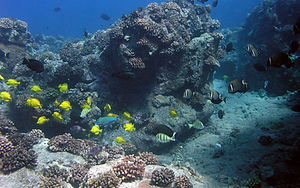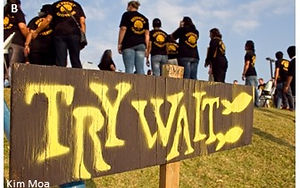Our Past Projects
Asia Development Bank - Natural Capital Specialist

Nearly all ADB’s developing member countries (DMCs) heavily depend on natural capital (e.g., land, water, forest, renewable energy and marine resources) for their socioeconomic growth, especially in their rural areas. However, natural capital has been underdeveloped, over-exploited or polluted in recent decades. The associated ecosystems have become increasingly more fragile and susceptible to climate change. Weakening ecosystems pose direct threats to food, nutrition and livelihood security, and trap many rural households in prolonged poverty. To cope with these persistent challenges, ADB is in the process of establishing a “Natural Capital Lab (NCL)”, to assist DMCs in monitoring and valuing dynamic changes in natural capital and to design and improve strategies, policies, incentivize programs and support projects to promote natural capital conservation and investments. These efforts will generate and strengthen transformational community-oriented solutions and ecosystem-based measures for climate change adaptation. Jade was hired as a Natural Capital Specialist to identify interlinkages among natural capital, ecosystem services and development in the context of Sri Lanka, along with developing training material and a framework for environmental accounting to make practical recommendations in enhancing natural capital investment.
Photo:
Credit : www.shutterstock.com
Ike Wai

Our team collaborated with the University of Hawaii ‘ike Wai project. The project mission is to ensure Hawaiʻi’s future water security through an integrated program of research, education, community engagement, and decision support. Its vision is to promote water resource management in Hawaiʻi that is sustainable, responsible, and data driven. Scientific, cultural, and social dimensions to the problem of water security are integrated in a transparent, stakeholder-driven, and rigorous water research enterprise. From this collaboration came several publications.
Photo: Copyright: Design Pics / Greg Vaughn
Uncovering the effects of tourism on the fishery of Hāʻena

This project seeks to quantify observed changes in the fish community in Hāʻena, Kauaʻi to the road closure resulting from the extreme flood event in April 2018 and more recently the cessation of tourism due to COVID-19. The perception of the community is that fishes in the area, particularly fishery species, became more abundant in response to the reduction of tourist activity in nearshore waters. To address this question, we have conducted surveys of fish abundance, behavior, and benthic (coral and algae) cover, and human use beginning in 2018.
Informing conservation from ridge-to-reef in Vanuatu

Expansion of coastal development, along with wastewater discharge and fertilizers, can harm coral reefs and their fisheries through increases in sediment and nutrient runoff. Consequent reef degradation directly affects ecological resilience, food security, human well-being, and cultural practices in tropical island communities around the world. To determine where management on land can most effectively support current community-led efforts to restore reef health and abundance in Vanuatu, we built a fine-scale, linked land-and-sea modeling framework that integrates existing land-use with coral reef condition and fisheries health and applied it at the regional scale using existing datasets and the local scale with models calibrated by field data we collected.
Pūpūkea Coral and Fish Assessment: 2010 - 2019

The State of Hawaii created the Pūpūkea-Waimea Marine Life Conservation District (MLCD) on the north shore of the island of O‘ahu in 1983 (and expanded in 2002) to conserve the unique ecological resources of the area and to allow for public interaction with the marine environment. Scientific monitoring of fish and benthic communities in the Pūpūkea-Waimea MLCD has occurred over the years since its expansion with the most recent comprehensive surveys occurring in 2010. At the request of Malama Pūpūkea-Waimea (a non-profit community organization that conducts outreach and monitoring) Seascape Solutions replicated the 2010 surveys inside the MLCD in order to 1) evaluate changes in coral cover and 2) quantify changes in coral reef fish assemblages over time at Pūpūkea-Waimea MLCD
Ka‘ūpūlehu Marine Reserve Comparison of Targeted Fish Behavior

Ka‘ūpūlehu is located on the west coast of Hawai‘i island. The Nature Conservancy Hawai‘i (TNCH) partnered with the Ka‘ūpūlehu community to help establish the Ka‘ūpūlehu Marine Reserve which went into effect on July 29, 2016. The rule establishes a 10-year no-take “rest period” (with limited exceptions) to allow for the recovery of reef fish stocks. Following the rest period, a fishery management plan (to be developed) will be implemented for Ka‘ūpūlehu. This analysis of the effect of protection on fish behavior was based on data collected in partnership with TNCH. It complements data collected by TNCH on fish assemblage metrics in the same areas, during the same time periods.
Seascape models reveal places to focus coastal fisheries management

To design effective marine reserves and support fisheries, more information on fishing patterns and impacts for targeted species is needed, as well as better understanding of their key habitats. We developed a set of fishing effort and habitat layers at high resolution and employed machine learning techniques to create regional-scale seascape models and predictive maps of biomass and body length of targeted reef fishes for the main Hawaiian Islands. By comparing current targeted fish distributions with those predicted when fishing effort was removed, areas with high recovery potential on each island were revealed. Spatial protection of these areas would aid recovery of nearshore coral reef fisheries
A linked land-sea modeling framework to inform ridge-to-reef management in high oceanic islands

Declining natural resources have contributed to a cultural renaissance across the Pacific that seeks to revive customary ridge-to-reef management approaches to protect freshwater and coral reef fisheries. Effective ridge-to-reef management requires improved understanding of land-sea linkages and decision-support tools to simultaneously evaluate the effects of terrestrial and marine drivers on coral reefs, mediated by human activities. To address this gap, we developed a linked land-sea tool, which coupled groundwater and coral reef models at fine spatial resolution, to determine the effects of terrestrial drivers, mediated by human activities, and marine drivers on coral reefs.
Place-based management can reduce human impacts on coral reefs in a changing climate

We applied a linked land–sea tool, which couples groundwater nutrient export and coral reef models. This spatially explicit tool simultaneously tracks changes in multiple benthic and fish indicators as a function of community-led marine closures, land-use and climate change scenarios. We applied this framework in Ha‘ena and Ka‘upulehu, located at opposite ends of the Hawaiian Archipelago to identify priority areas on land where upgrading cesspools can reduce human impacts on coral reefs in the face of projected climate change impacts.
Scenario planning with linked land-sea models inform where forest
conservation actions will promote coral reef resilience
We developed a linked land-sea modeling framework based on remote sensing and empirical data, which couples sediment export and coral reef models at fine spatial resolution. This spatially-explicit (60 × 60 m) framework simultaneously tracks changes in multiple benthic and fish indicators as a
function of land-use and climate change scenarios. We applied this framework in Kubulau District, Fiji, to investigate the effects of logging, agriculture expansion, and restoration on coral reef resilience. We evaluated where land-use change and bleaching scenarios would impact sediment runoff and downstream coral reefs to identify priority areas on land, where conservation or restoration could promote coral reef resilience in the face of climate change.
